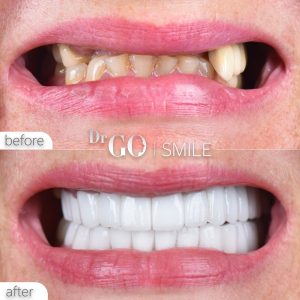
In the realm of modern dentistry, achieving the perfect smile often involves a combination of aesthetic treatments. Two popular solutions are veneers and dental implants. While each serves a distinct purpose, when used together, they can create a harmonious and beautiful smile that enhances both functionality and aesthetics. This article explores how veneers and dental implants can work in tandem, the benefits of combining these treatments, and considerations for patients seeking comprehensive dental solutions.
Understanding Veneers and Dental Implants
Veneers are thin shells made of porcelain or composite resin, designed to cover the front surface of teeth. They are primarily used to improve the appearance of teeth that are discolored, chipped, or misaligned. Veneers can provide a natural and aesthetically pleasing look while preserving most of the natural tooth structure.
Dental implants, on the other hand, are titanium posts surgically placed into the jawbone to replace missing teeth. An implant acts as a root for a replacement tooth or a bridge, providing a sturdy foundation for the restoration. Implants offer a permanent solution for tooth loss, ensuring that patients can eat, speak, and smile with confidence.
The Benefits of Combining Veneers and Dental Implants
- Comprehensive Aesthetic Improvement: For patients with multiple dental issues, such as missing teeth alongside discolored or damaged ones, combining veneers and implants can lead to a complete smile makeover. Implants can replace missing teeth, while veneers can enhance the appearance of existing teeth, creating a uniform and beautiful smile.
- Functional Restoration: Patients who have lost teeth often experience difficulties in chewing and speaking. Dental implants restore these essential functions. When paired with veneers, patients can achieve both functionality and aesthetic appeal, allowing them to enjoy their favorite foods and engage in social interactions without hesitation.
- Longevity and Durability: Both veneers and dental implants are designed for longevity. While veneers typically last 10 to 15 years with proper care, dental implants can last a lifetime. When combined, they provide a durable solution that enhances both form and function.
- Minimized Bone Loss: Dental implants stimulate the jawbone, preventing bone resorption that often occurs after tooth loss. This is crucial for maintaining facial structure and preventing the sunken appearance that can accompany missing teeth. Veneers, on the other hand, require minimal tooth reduction, preserving the natural tooth structure. Together, they promote overall oral health.
- Customized Treatment Plans: Every patient is unique, and dental professionals can tailor treatment plans to meet individual needs. A combination of veneers and implants allows for customized solutions that consider the patient’s aesthetic goals, budget, and oral health.
When to Consider Veneers and Implants Together
Patients may consider combining veneers and implants in several scenarios:
- Severe Tooth Discoloration: If a patient has one or more severely discolored teeth alongside missing ones, implants can replace the missing teeth while veneers enhance the color and appearance of the existing teeth.
- Damaged Teeth with Missing Adjacent Teeth: For patients with damaged teeth and adjacent missing teeth, implants can replace the missing teeth, while veneers can restore the aesthetics of the damaged ones.
- Age-Related Dental Issues: As patients age, they may experience both tooth loss and wear on their existing teeth. A combination of implants and veneers can rejuvenate the smile and improve overall dental health.
The Treatment Process
The treatment process for combining veneers and dental implants typically involves several steps:
- Initial Consultation: A thorough evaluation is conducted, including X-rays and dental impressions. The dental professional will assess the patient’s needs and recommend a treatment plan.
- Implant Placement: If implants are necessary, the dentist will place them in the jawbone during a surgical procedure. This is usually done under local anesthesia or sedation.
- Healing Period: After the implants are placed, a healing period of several months is required for the implants to fuse with the bone (osseointegration).
- Veneer Preparation: Once the implants have healed, the dentist will prepare the existing teeth for veneers by removing a thin layer of enamel. Impressions are then taken to create custom veneers.
- Final Restoration: After the veneers are fabricated, they are bonded to the prepared teeth, completing the aesthetic transformation. If implants are part of the treatment, the final crowns will also be placed at this time.
Aftercare and Maintenance
Proper aftercare is essential for maintaining both veneers and implants. Patients should adhere to good oral hygiene practices, including regular brushing and flossing, and attend routine dental check-ups. Avoiding habits such as teeth grinding, chewing on hard objects, or using teeth as tools will also help ensure the longevity of both veneers and implants.
Conclusion
Combining veneers and dental implants offers a comprehensive solution for patients seeking to improve their smiles. This combination allows for enhanced aesthetics, restored functionality, and long-term durability. Consulting with a qualified dental professional is essential to determine the best approach tailored to individual needs. With the right treatment plan, patients can achieve the smile of their dreams, boosting their confidence and improving their quality of life.

